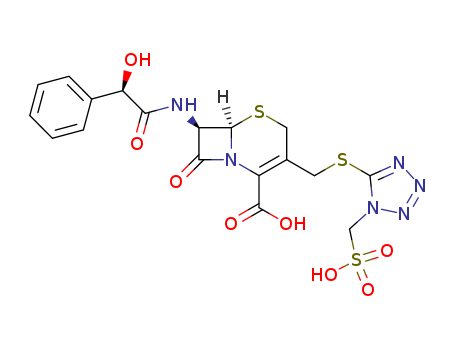- Chemical Name:Cefonicid
- CAS No.:61270-58-4
- Molecular Formula:C18H18 N6 O8 S3
- Molecular Weight:542.574
- Hs Code.:
- UNII:6532B86WFG
- DSSTox Substance ID:DTXSID7022758
- Nikkaji Number:J18.085H
- Wikipedia:Cefonicid
- Wikidata:Q5057286
- NCI Thesaurus Code:C65299
- Metabolomics Workbench ID:43497
- ChEMBL ID:CHEMBL1601
- Mol file:61270-58-4.mol
Synonyms:Cefonicid;Cefonicid Disodium Salt;Cefonicid Monosodium;Cefonicid Monosodium Salt;Cefonicid, Sodium;Monocid;SK and F 75073;SK and F-75073;SK and F75073;SKF 75073 2;SKF-75073-2;SKF750732;Sodium Cefonicid





